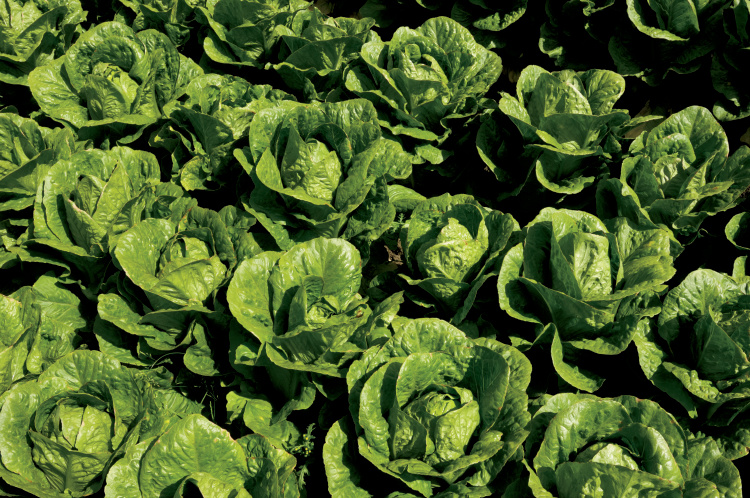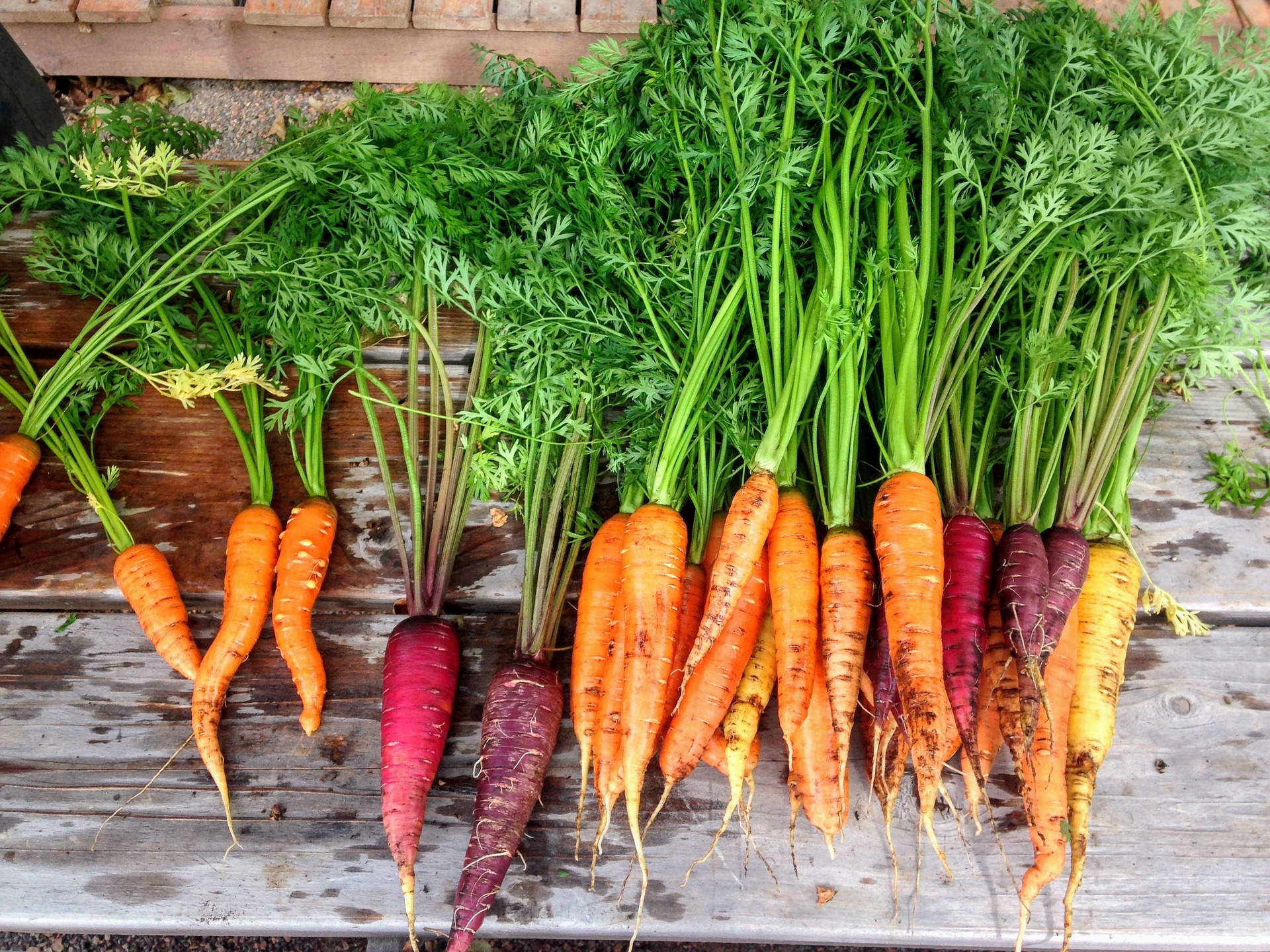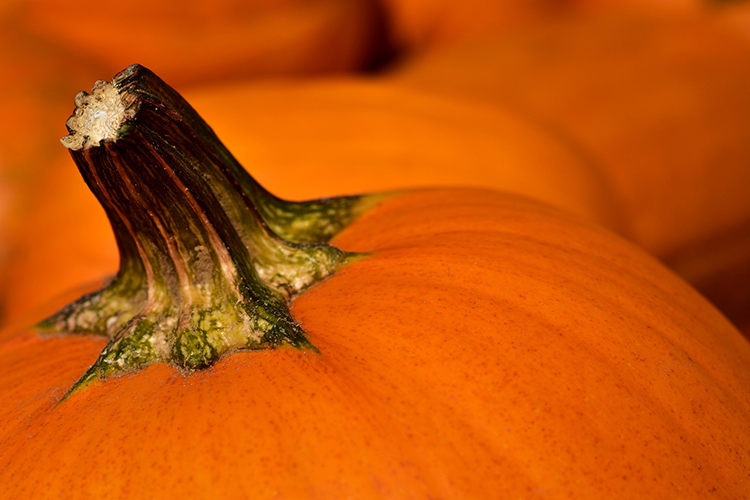 So, you’re going to try out companion gardening and try interplanting fruits and veggies with flowers and herbs. Keep in mind that specimens planted near each other should have different types of root systems, such as shallow-rooted, medium rooted or deep-rooted, so they won’t compete directly with each other.
So, you’re going to try out companion gardening and try interplanting fruits and veggies with flowers and herbs. Keep in mind that specimens planted near each other should have different types of root systems, such as shallow-rooted, medium rooted or deep-rooted, so they won’t compete directly with each other.
See more: Eco-Friendly Gardening Tips
 Shallow-Rooted Plants
Shallow-Rooted Plants
- Corn
- Broccoli
- Spinach
- Cabbage
- Lettuce
- Kale
- Chard
- Onions
- Flowering annuals (the majority of them)
See more: 8 Water-Conserving Tips for Summer Gardening
 Medium-Rooted Plants
Medium-Rooted Plants
- Cucumbers
- Turnips
- Beans
- Summer squash
- Carrots
- Peas
- Flowering perennials (a good portion of them)

Deep-Rooted Plants
- Tomatoes
- Asparagus
- Winter squash
- Pumpkins
- Parsnips
Have you ever tried companion gardening? Let us know your experience in the comments!
[…] is suitable for short living plants. The same type of design will fail on longer living plants – those with deep roots, such as corn, cucumbers or tomatoes. Watermelon is also out of […]
[…] can enjoy the thinnings of onions as they spring. Onions are shallow-rooted plants and must be kept watered in dry […]
[…] that have shallow roots can be planted in wet areas, as long as you fix the drainage problem by digging or tilling deep […]
[…] can enjoy the thinnings of onions as they spring. Onions are shallow-rooted plants and must be kept watered in dry […]
[…] that the pot is big enough to support continued growth. This gardening method is usually best for shallow or medium-depth root […]
[…] via […]
[…] via […]
[…] via […]
I’m no expert but l imagine most plants do better when well cared gor especially enriching the soil, watering when needed , getting enough sun and wind protection. Plants also like the company of other plants
[…] via […]
[…] via […]
[…] via […]
[…] via […]
[…] via […]
[…] via […]
[…] Deep rooted plants can be difficult and time-consuming to remove, but with the right tools, it is simple to do so. You’ll need a grub hoe to get as close to the root ball as possible. If you can’t get close enough, use a branch cutter or lopper to remove the roots. After the roots have been cut, loosen the soil around the root ball with the mattock or hoe, then use an axe or saw to remove it. Garden shears should never damage foliage of a plant. […]
[…] More items…•Mar 23, 2018 […]
[…] More items…•Mar 23, 2018 […]
[…] More items…•Mar 23, 2018 […]
[…] More items…•Mar 23, 2018 […]
[…] More items…•Mar 23, 2018 […]
[…] More items…•Mar 23, 2018 […]
[…] More items…•Mar 23, 2018 […]
[…] More items…•Mar 23, 2018 […]
[…] More items…•Mar 23, 2018 […]
[…] Click to see full answer […]
[…] VegetablesShallow Rooting Requires More Space in Garden Medium – Large 12″ – Medium 18″ Rooting 18″ – 24″ deep Rooting 24 – 36″ with 30″ – 36″ with 30″ – 36″ with 30″ – 36″ with 30″ […]
[…] More items…•Mar 23, 2018 […]
[…] low fertility areas in the Rocky Mountains, some plants may find them too hot. It is best to grow shallow rooting plants and hardy plants with strong, tenacious rooting systems. Succulents, for example, have an […]
[…] more here […]
[…] more here […]
[…] more here […]
[…] more here […]
[…] with chisel plows creates a suitable ground for shallow-rooted crops. You can use chisel plows to sow tiny seeds such as vegetables, grass, and herb […]
[…] are planted close together, they can help to reduce water loss from the soil. For example, when shallow-rooted plants are planted alongside deep-rooted plants, the deep-rooted plants can help to draw water from deeper […]
[…] are planted close together, they can help to reduce water loss from the soil. For example, when shallow-rooted plants are planted alongside deep-rooted plants, the deep-rooted plants can help to draw water from deeper […]
Very informative content
This has broadened my knowledge in this section. Thanks for sharing.
… [Trackback]
[…] There you will find 39748 more Infos: farmflavor.com/lifestyle/companion-gardening-tip-know-your-roots/ […]